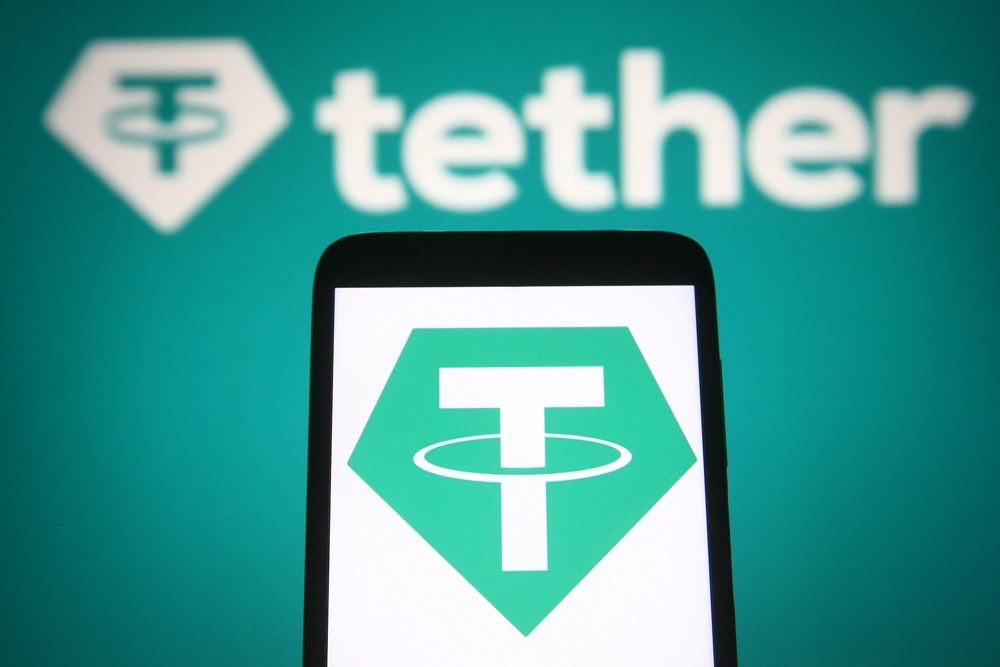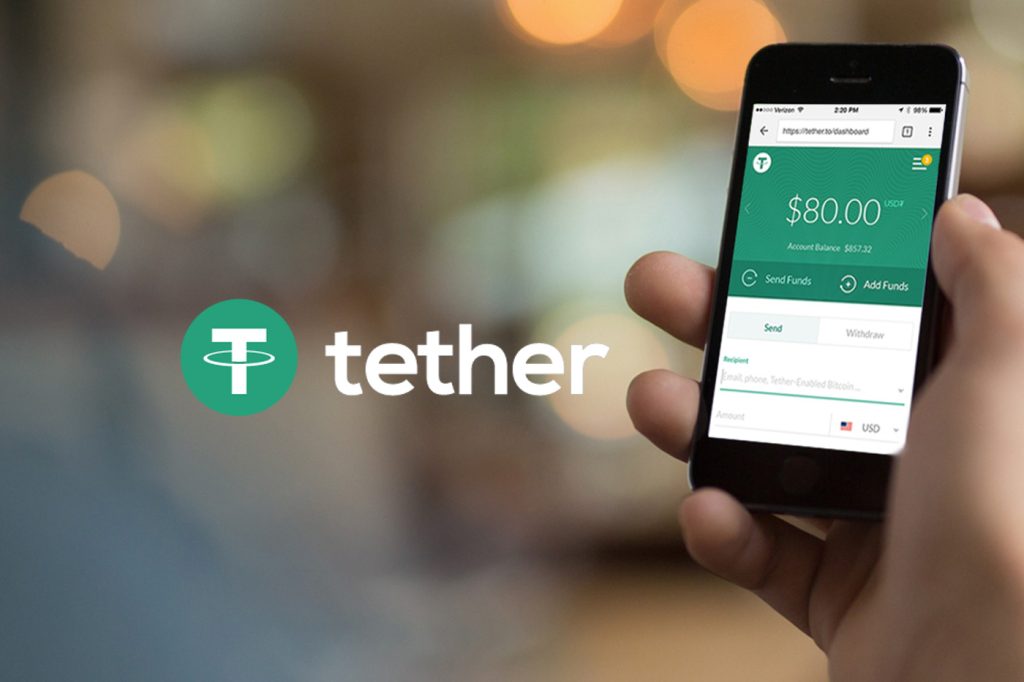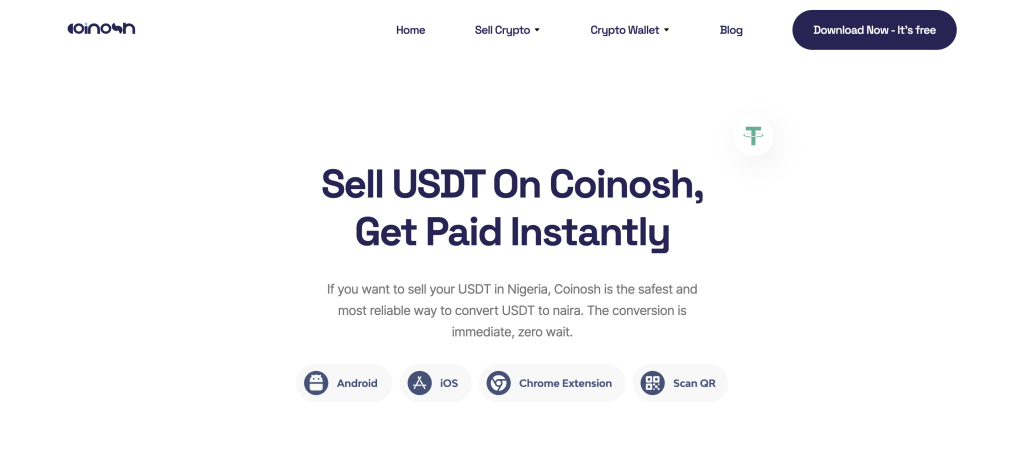Tether USDT 101 – Everything You Need To Know About USDT
Reading Time: 7 minutes

Ever wished for a digital version of the US dollar?
Consider that wish a done deal, because the digital version of USD actually exists — and is called USDT.
Also known as Tether, USDT is the largest stablecoin in the crypto market.
Curious to know more? Then let’s take you on a USDT journey.
Get ready to discover all you need to know about USDT.
About USDT
USDT’s journey started in 2014, when Reeve Collins, Brock Pierce, and Craig Sellars came together to create a stablecoin that maintains a fixed 1:1 ratio with the US dollar.
They partnered with Tether Limited to create the internet’s digital dollar — USDT.
USDT was created to solve a core issue with cryptocurrencies: convertibility and volatility between fiat and crypto. To correct this, the founders of USDT created USDT to be fully backed 1:1 by US dollar deposits.
USDT is a stablecoin pegged to the US dollar, meaning, for every USDT coin in circulation, an equal amount is held in reserve. With this, USDT provides the stability that most cryptocurrencies don’t have.
Using USDT: How Does it Work?
USDT is used every day by millions of users to transact on several blockchain networks.
Speaking of blockchain networks, USDT is built on multiple blockchain networks, allowing various users to be able to use the coin.
Wonder how USDT works? Let’s take a look at all the systems that make up USDT. Come along!
Stablecoins
As the name suggests, stablecoins are digital assets that provide a stable value by having their price pegged to a stable reserve asset, usually fiat currencies like the US dollar, Euro, or Pound.
For example, a stablecoin pegged to the Euro would maintain a 1:1 ratio, meaning that one unit of the stablecoin would be equivalent to one Euro in value.
Stablecoins help to reduce price volatility and fluctuations, while providing stability.
The Blockchain Network
Blockchain is a decentralized, open-source network that facilitates the secure and transparent record of crypto transactions.
Aside from being adopted in the crypto ecosystem, blockchain is the underlying technology for other decentralized finance industries.
A blockchain often consists of blocks, with each block containing different sets of verified transactions. Once a block is added to the blockchain, it cannot be removed, edited, or tampered with.
Bringing it back to USDT…
USDT was first built and launched on Omni, a protocol layer for Bitcoin, allowing the management of USDT on the Bitcoin network.
However, as USDT gained more adoption, it expanded to other blockchain platforms like Ethereum, Solana, Tron, Algorand, and others. This makes it compatible with these other platforms.
For example, USDT on Tron follows the TRC-20 standard, while the USDT on Ethereum follows the ERC-20 standard.
USDT Minting
Unlike other traditional cryptocurrencies like Bitcoin or Ethereum, USDT is not created through the regular mining process of validating transactions.
Instead, USDT is created through a process known as “minting“.
Minting occurs when users send fiat into Tether’s reserve accounts in exchange for USDT. Once the fiat is verified, the equivalent USDT is minted and sent to the user’s wallet.
USDT Wallet and Transactions

Generally, you need a crypto wallet to carry out transactions on the blockchain network. In this sense, specifically, you need a USDT wallet to carry out USDT transactions. This wallet allows you to send, store, and receive USDT safely.
On the flip side, USDT transactions happen when you send or receive USDT from one wallet to another.
USDT Explorer
An explorer helps users get real-time information from the blockchain network. Recall that we mentioned the blockchain network is open-source and decentralized.
To tap into this feature of the blockchain, you need an explorer to get whatever insights you need.
Now, let’s bring it back to USDT.
USDT doesn’t have its own explorer. But because USDT has different blockchain networks, each one has its explorer for USDT transactions.
You can track all USDT transactions on any blockchain with an explorer. These transactions include wallet balances, movement of tokens, transaction details, etc.
- Ethereum Explorer
USDT transactions on the Ethereum network can be explored with Ethereum explorers like Etherchain and Etherscan.
- Tron Explorer
For USDT transactions carried out on the Tron blockchain network, users can employ Tronscan — the main explorer for the Tron blockchain.
Similarly, other blockchains like Solana, Algorand, EOS, and others have their respective blockchain explorer.
Investing in USDT
Interested in investing in digital dollars? Let’s tell you all you need to know.

But first… let’s look at the risks and benefits of using or investing in USDT.
Benefits of Investing in USDT
- Stability
The core advantage of USDT is that the coin maintains a stable value relative to its underlying reserve asset — the US dollar. This stability is a sweet deal for users avoiding the volatility of other cryptocurrencies.
USDT offers a relatively predictable and stable crypto coin for transactions and storing value.
- Hedging
USDT can be used as a hedge against market volatility.
Whenever other cryptocurrencies have heightened price fluctuations, users can easily convert their assets into USDT to preserve their value and escape potential losses.
- Defi Compatibility
USDT is widely adopted in decentralized finance (DeFi) protocols and applications. It can be used for yield farming, as collateral, or borrowed in liquidity strategies within DeFi platforms. This is a major perk for investors.
- Liquidity
USDT is one of the most popular and widely traded stablecoins in the cryptocurrency ecosystem. Several crypto exchanges, decentralized platforms, and trading pairs support it.
This gives it high liquidity, making it super easy to convert USDT into fiat currencies and other cryptocurrencies.
- Accessibility
USDT is available on multiple blockchain networks like Bitcoin, Ethereum, Solana, Tron, EOS, and Algorand. This availability on multiple blockchains makes USDT easily accessible, allowing users to choose the blockchain network they’re most comfortable with.
Risks of Investing in USDT
- Regulatory Risks
Generally, the regulatory landscape for stablecoins is constantly evolving and subject to future changes. USDT is not exempted. Restrictions imposed by global authorities can affect the value and usability of USDT.
- Risk of Centralized Control
A while back, the company that issues USDT, Tether Ltd,faced some criticism from the public — regarding the transparency of the reserves holding USD.
In a way, USDT goes against the underlying core principles of crypto. The company, Tether, still holds centralized control over the coin. This can become a major issue if the company ever goes rogue.
The lack of regular and transparent audits can raise doubts about the authenticity of USDT.
- Systemic Risks
The cryptocurrency market, at large, can impact the value of USDT.
With extreme market volatility or systemic risks, USDT can face challenges in maintaining its liquidity. The overall stability of the crypto ecosystem can indirectly impact the value and performance of USDT.
Now that we’re clear on the risks and benefits of USDT, let me walk you through how to start buying and selling USDT.
How to Buy USDT with Fiat
Ready to buy? Follow these steps religiously to buy USDT from a crypto exchange platform.
1. Consider Your Risk Appetite:
Before you start investing in USDT, consider your risk appetite. How much are you comfortable investing? Once you’re sure how much you want to invest, proceed.
2. Choose A Reputable Crypto Exchange Platform
Crypto exchange platforms provide you with the opportunity to invest in any cryptocurrency. Popular ones include Binance, Coinbase, BitFinex, Kraken, etc.
3. Fund Your Crypto Exchange Account With Fiat
Seen your preferred crypto exchange platform? Awesome.
Now you can fund the crypto exchange platform with fiat. The good thing is, most crypto exchange platforms come with a fiat wallet, enabling you to transfer money to the platform and buy your preferred cryptocurrency.
4. Buy USDT
After funding your crypto fiat wallet with the amount you’re willing to invest, proceed to buy.
Navigate to the market section and search for USDT. However, if buying directly from the platform, search for the USDT trading pair instead.
Popular pairs include: USDT/USDT, USDT/ETH, USDT/BTC, etc. You can also convert the fiat in your account into BTC, ETH, USDT, or your preferred opposite pair.
5. Place a Buy Order
This next step only applies if you buy on p2p or directly from the crypto platform.
If so, choose a market order (buying at the current market price) or a limit order (setting your desired price).
6. Store your USDT
Once your buy order is confirmed, the USDT will be deposited into the platform’s USDT wallet. You can leave it on the platform or transfer it to a more secure wallet.
How to Sell USDT for Fiat

Want to sell your USDT for fiat or another cryptocurrency? Follow these steps.
P.S: You can sell USDT through p2p (peer-to-peer), i.e., within users in the platform, or sell to the crypto exchange itself.
If you want to sell on a different platform, you must first transfer your USDT to the platform’s USDT wallet.
Now let’s get into the process.
1. Choose A Reputable Crypto Exchange
Choose your preferred crypto platform to sell your USDT, and move on to the next step.
2. Connect Your Fiat Bank Account
If you aren’t selling for fiat, ignore this step.
If you’re selling your USDT for fiat, you must link a fiat account to the crypto platform. The account is where your fiat will be deposited into.
However, if you’re selling through p2p, you can send the buyer your fiat bank account details.
3. Sell Your USDT for Fiat
If selling directly to the crypto exchange, navigate to the “market” or “sell section” to sell USDT for your preferred currency. Confirm the amount of USDT you want to sell, and review the order details (to avoid heartwrenching stories).
If selling via p2p, navigate to the p2p section.
4. Withdraw your Funds
Once your sell order is confirmed, the fiat will be deposited into either your fiat wallet or your given account details.
If deposited in a fiat wallet, you can withdraw the fiat into your preferred bank account.
P.S: These steps are general guidelines, and the exact steps may differ for your crypto platform.
Conclusion: USDT and the Future
USDT isn’t going anywhere anytime soon. It brings a lot of value to the cryptocurrency ecosystem.
It remains a prominent stablecoin for hedging and transactions, while offering the stability most crypto coins don’t have.
Moving forward, USDT’s future depends on crucial factors like regulatory scrutiny and Tether Ltd.’s actions to improve transparency. This will significantly influence the trajectory of USDT – for better or worse.
However, remember that investing in USDT carries inherent risks. As an investor, conduct your due research, understand the stability of reserves, and stay informed about regulatory developments. If you’d love to check out other cryptocurrencies, please check here.
Shalom!